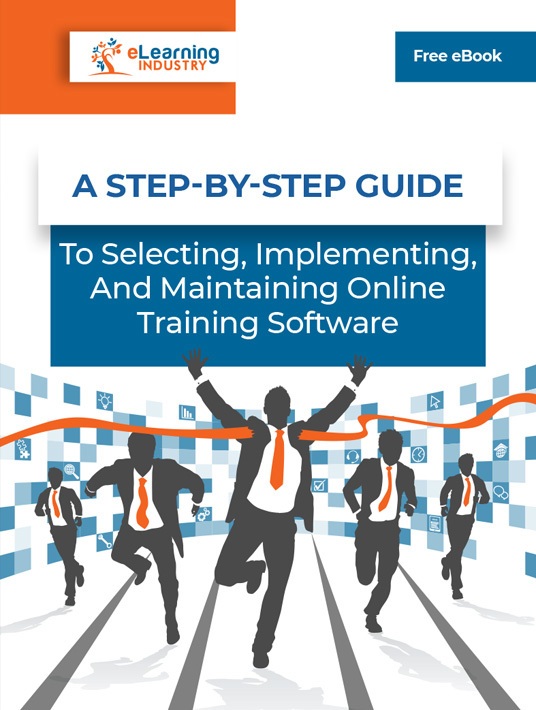Types Of Online Training Software: What Is There To Choose Based On L&D Applications
These days, computing devices have trickled into every area of corporate life. From making appointments on our tablets to paying for items on our phones, technology is more present than ever. That’s why management sometimes rushes to incorporate online training. While they may think they’re doing the right thing, it could end up being a wasteful undertaking. Technology can be expensive, so before making the financial commitment, make sure it’s the right move. Review your organization for gaps and explore how these gaps can be filled using the right online training software. Don’t be quick to buy until you explore several types of online training software and are sure of the online training software’s relevance. Here are 5 different types of online training software based on L&D applications.

1. Onboarding New Team Members
In many organizations, new employees go through a probation period. Their first three to six months are a trial, of sorts. The company assesses them to see if they’re the right fit. The employee also gets a chance to see if this is where they want to be. Employees usually have an orientation session on their first day. It will include team introductions and an office tour. For the next few weeks, the employee should have online training sessions. They will learn about their roles and where they fit into the organization. They can also get familiar with relevant organizational policies. They will be taught about workflow, chains of command, and what is expected of them. It’s best done online, to avoid interfering with daily tasks.
The usual approach is to use the first few days for full-time training. This system isn’t efficient. It uses unnecessary time and resources. Instead, arrange for new employees to spend a few hours of each day training online. They can use the staff LMS and log onboarding hours without disrupting their set tasks for the day.
2. Product And Customer Service Familiarization
Another helpful form of online training is product and service training. While onboarding teaches the philosophy of the company, these sessions are more practical. The mistake many organizations make is to restrict product and customer service online training to the sales team. But we’ve all been in situations where strangers or family members ask us about our company.
Someone will mention where you work, and someone else will be curious about the company’s offerings. And if you immediately hand them off to a relevant colleague, they will feel dismissed. That’s why it helps to know a little bit about your products or services.
You don’t have to be an expert but you should have the knowledge to offer relevant information to clients. Know enough to engage a sales prospect and develop a lead. Once you’ve established interest and rapport, you can call in the sales team to close the deal.
3. Routine Compliance Online Training
Depending on the type of industry you’re in, it may be necessary to update compliance documents. These refresher courses are usually undertaken annually, so online training is a good way to keep your team up to date. Instead of taking time off work and disrupting the whole firm, let everyone take it on individually. LMS platforms can send notifications to remind your employees when their licenses are about to expire. This keeps your team on track and avoids the unnecessary expense of non-compliance fines. There are other situations where this kind of online training course can be used. If an employee took a study break or maternity leave, it’s a good way to ease them back in. Another relevant training situation is for industry changes. In many sectors, there are occasionally new developments. It could be new, raw material, an upgraded operating system or a new legal requirement. These can easily be added to the existing LMS, including an alert for team members. It will alert them that there’s new online training content to explore.
4. Brushing Up On Soft Skills
Traditional education systems focus on teaching students to follow instructions and reproduce them on tests. When people leave school and get into the workforce, they struggle. They know how to pass tests, but they don’t know how to deal with real life. They require a different skill set to advance at work. These abilities are referred to as soft skills.
Online training is a good way to disseminate these lessons to your team. Relevant soft skills include communication, problem-solving, negotiation, time management, adaptability, ethics, presentation, and teamwork. These qualities are not only helpful at work, but they also improve the overall quality of life. Because these are general skills it’s not practical to teach them in a workshop or a seminar. That approach eats into work time and runs up a high bill. Plus, these are skills that can be improved cumulatively. Use online training software to help staff develop these abilities, and consistently update teaching materials. There’s always something new to learn.
5. Developing Technical Skills
While soft skills are often neglected, technical ‘hard’ skills are well covered. Whether you’re a restaurant chef or a programmer, preparing for your job imbues you with the right technical ability. However, when a new technology is introduced to the workplace, you have to learn how to use it. It could be an automated coffee machine or a new photocopier. Many of these skills can’t be taught online but, where possible, online education saves time and money. Develop an online training course to teach the theory before employees physically interact with the new device. Online training courses can familiarize your team with new office terms or industry policies, especially if they need licensing.
As an L&D manager, you shouldn’t rush out and buy online training software for its own sake. Think carefully about the type of skills your people need. Then you can shortlist available types of online training software and online training courses to purchase the best one for your team. Course categories include introducing new members to your company philosophy. Get them onboard and familiarize them with your products and services. Maintain compliance levels, teach soft skills, and brush up technical abilities. Before you invest in online training software, make sure it gives justifiable ROI.
Download our eBook A Step-By-Step Guide To Selecting, Implementing, And Maintaining Online Training Software to learn how to choose, implement, and upkeep your new online training software. You’ll also discover tips to create a realistic budget and personalized the online training experience.








